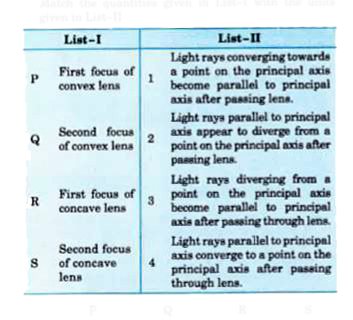In the given questions, two quantities are given. One as Quantity-I and another is Quantity-II. You have to determine relationship between these two quantities and choose the appropriate options as given below:
In village A, of the total population had gone to a formal school at some point of their lifetime. Out of the remaining, have never gone to any school and the remaining 80 were home schooled.
Quantities:
I. Total population of village A
II. Total population of village B, where are males and the remaining 160 are females.
Quantity- I Quantity-II
Quantity- I Quantity-II
Quantity- I Quantity-II
Quantity- I = Quantity-II
The correct Answer is:D
To solve the problem, we will analyze the information given for both villages A and B step by step.
Step 1: Determine the total population of village A
Let the total population of village A be x.
1. Calculate the number of people who went to a formal school:
- 20% of the total population went to a formal school.
- This can be calculated as:
People who went to school=0.20×x=0.2x
2. Calculate the remaining population:
- The remaining population after accounting for those who went to school is:
Remaining population=x−0.2x=0.8x
3. Determine how many of the remaining population never went to school:
- Out of the remaining 0.8x, 75% never went to school:
People who never went to school=0.75×0.8x=0.6x
4. Calculate the number of people who were homeschooled:
- The remaining population after accounting for those who never went to school is:
Remaining after never went to school=0.8x−0.6x=0.2x
- We know from the problem that this remaining population equals 80 (the number of homeschooled children):
0.2x=80
5. Solve for x:
- To find x, divide both sides by 0.2:
x=800.2=400
Thus, the total population of village A is 400.
Step 2: Determine the total population of village B
1. Given information about village B:
- 60% of the total population are males, and the remaining 160 are females.
- Let the total population of village B be y.
2. Calculate the percentage of females:
- Since 60% are males, the percentage of females is:
100%−60%=40%
3. Set up the equation for females:
- We know that 40% of the total population y equals 160:
0.40y=160
4. Solve for y:
- To find y, divide both sides by 0.40:
y=1600.40=400
Thus, the total population of village B is also 400.
Conclusion
Now we have:
- Quantity I (Total population of village A) = 400
- Quantity II (Total population of village B) = 400
Therefore, we can conclude that:
Quantity I=Quantity II
Final Answer
The relationship between the two quantities is that they are equal.
- 20% of the total population went to a formal school.
- This can be calculated as:
People who went to school=0.20×x=0.2x
- The remaining population after accounting for those who went to school is:
Remaining population=x−0.2x=0.8x
- Out of the remaining 0.8x, 75% never went to school:
People who never went to school=0.75×0.8x=0.6x
- The remaining population after accounting for those who never went to school is:
Remaining after never went to school=0.8x−0.6x=0.2x
- We know from the problem that this remaining population equals 80 (the number of homeschooled children):
0.2x=80
- To find x, divide both sides by 0.2:
x=800.2=400
- 60% of the total population are males, and the remaining 160 are females.
- Let the total population of village B be y.
- Since 60% are males, the percentage of females is:
100%−60%=40%
- We know that 40% of the total population y equals 160:
0.40y=160
- To find y, divide both sides by 0.40:
y=1600.40=400
- Quantity I (Total population of village A) = 400
- Quantity II (Total population of village B) = 400
Quantity I=Quantity II
The relationship between the two quantities is that they are equal.
Similar Questions
Name the law expressing the relationship between the quantities of a variable factor and the quantities of output.
View SolutionName the law expressing the relationship between the quantities of a variable factor and the quantities of output.
View SolutionGiven names of a scalar quantity and a vector quantity which have same dimensions.
View SolutionThe area under a graph between two quantities is given in the unit m/s. The quantities are
View SolutionWhen dimensions of a given physical quantity are given,the physical quantity is unique .
View SolutionMatch the quantities given in List-I with the units given in List-II

View SolutionThe quantities remaining constant in colision are
View SolutionThe ratio between two quantities is 7:9, If the first quantity is 511, then find the other quantity.
View SolutionMatch the quantities given in List-I to the respective ratios given in List-II.

View SolutionGiven below are two quantities named I and II. Based on the given information, you have to determine the relation between the two quantities. You should use the given data and your knowledge of Mathematics to choose among the possible answers.
Quantity I: In a mixture of 80 litre, Milk and water are in the ratio of 7 : 1. If 30% of the mixture is taken out, Find the quantity of the water left in the mixture.
Quantity II: 7 litre
View Solution
